

— Blogs —
—Products—
 Consumer hotline +8618073152920
Consumer hotline +8618073152920 WhatsApp:+8615367865107
Address:Room 102, District D, Houhu Industrial Park, Yuelu District, Changsha City, Hunan Province, China
Product knowledge
Time:2025-11-25 09:38:09 Popularity:85
1. Open-field crop planting (rice, wheat, corn, cotton, vegetables, etc.)
2. Greenhouse and facility agriculture (vegetable/flower greenhouses, plant factories)
3. Orchard and fruit tree management (citrus, apples, grapes, tea gardens)
4. Livestock and pasture management (monitoring heat stress in cattle/sheep barns, grassland evapotranspiration)
5. Agricultural scientific research and experimental stations (variety trials, climate change research)
6. Precision irrigation and water-saving agriculture (drip irrigation, sprinkler irrigation decision-making)
7. Plant protection and pest forecasting (early warning of downy mildew, blight, locusts, etc.)
8. Soil improvement and fertilizer management (monitoring salinity and fertilization effects)
9. Agricultural insurance and disaster assessment (frost, drought, hail verification data)
10. Smart farms and digital agriculture platforms (integration with drones, agricultural machinery, IoT systems)

An agricultural weather station is a key foundational device in the agricultural IoT system. By continuously monitoring multiple elements such as temperature, humidity, wind, rain, and light, it provides real-time data support for crop planting, greenhouse management, pest and disease warning, and irrigation decisions. This article comprehensively explains the working principles, structural design, signal output, installation methods, troubleshooting, and selection guidelines of agricultural weather stations from an engineering and application perspective, suitable as an industry knowledge base.
An Agricultural Weather Station is an integrated monitoring system that combines multiple meteorological sensors to automatically collect agricultural-related meteorological and environmental parameters over long periods with high stability. Parameters typically include:
- Air temperature and humidity
- Wind speed and direction
- Precipitation
- Light intensity and solar radiation
- Soil temperature, moisture, EC, pH
- Atmospheric pressure, evapotranspiration, leaf wetness, etc.
Its core function is to realize monitoring, recording, early warning, and decision support through the chain: Sensors → Data collector → Communication module → Cloud platform.

The working principle consists of three layers:
| Parameter | Common Measurement Principle | Technical Notes |
| Temperature | Thermistor / PT100 / Semiconductor | Resistance changes with temperature; good linearity, fast response |
| Humidity | Capacitive humidity sensor | Dielectric constant changes with humidity |
| Wind Speed | Three-cup / Ultrasonic | Mechanical or time-of-flight acoustics |
| Wind Direction | Wind vane / Ultrasonic | Phase difference determination |
| Rainfall | Tipping bucket / Optical scattering | Count tips or light intensity change |
| Light/illuminance | Photodiode / Spectral sensor | Converts light energy to electrical signal |
| Soil Moisture | FDR (Frequency Domain Reflectometry) | Measures change in dielectric constant |
| Soil EC/pH | Conductivity electrode / Composite electrode | Ion mobility or potential difference |
Main signal pathways supported:
→ Commonly used in traditional industrial control; 4–20 mA has strong anti-interference and transmission distance >1000 m
→ Can connect multiple sensors, supports multi-node networking up to 1200 m
→ Common function codes: 03 (read holding registers), 04 (read input registers)
→ LoRa: suitable for farmland, typical range 1–3 km
→ 4G/5G: remote transmission, no distance limit
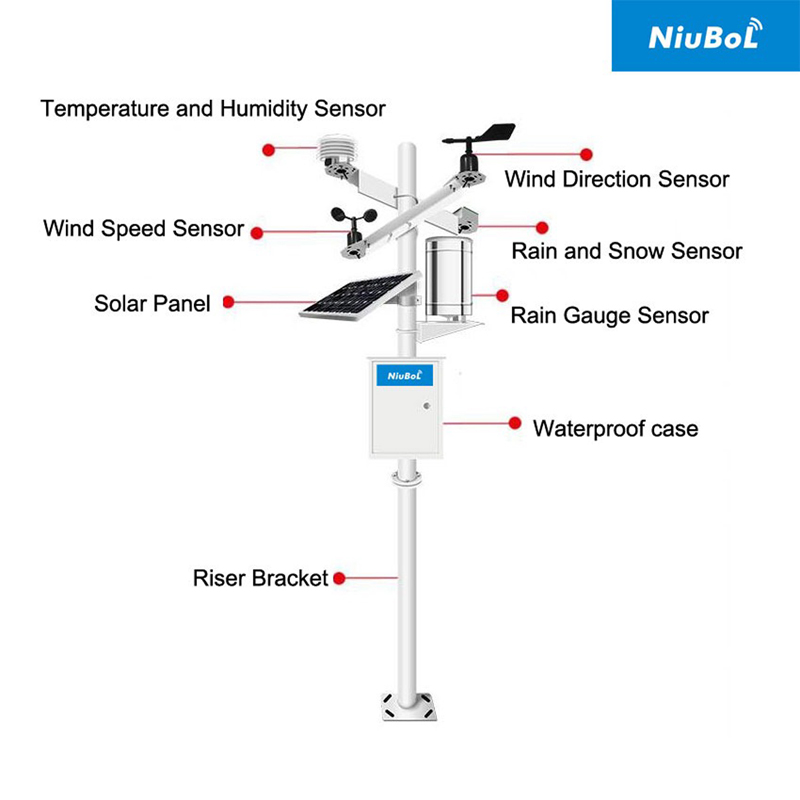
Sensor → Collector (A/D conversion or RS485 parsing) → Communication module (LoRa/4G) → Cloud platform (parsing, storage, visualization) → PC/APP/API
- Sensor calibration compensation
- Data filtering (moving average/denoising)
- Anomaly detection and alarms
- Decision models (irrigation demand, pest & disease models, etc.)
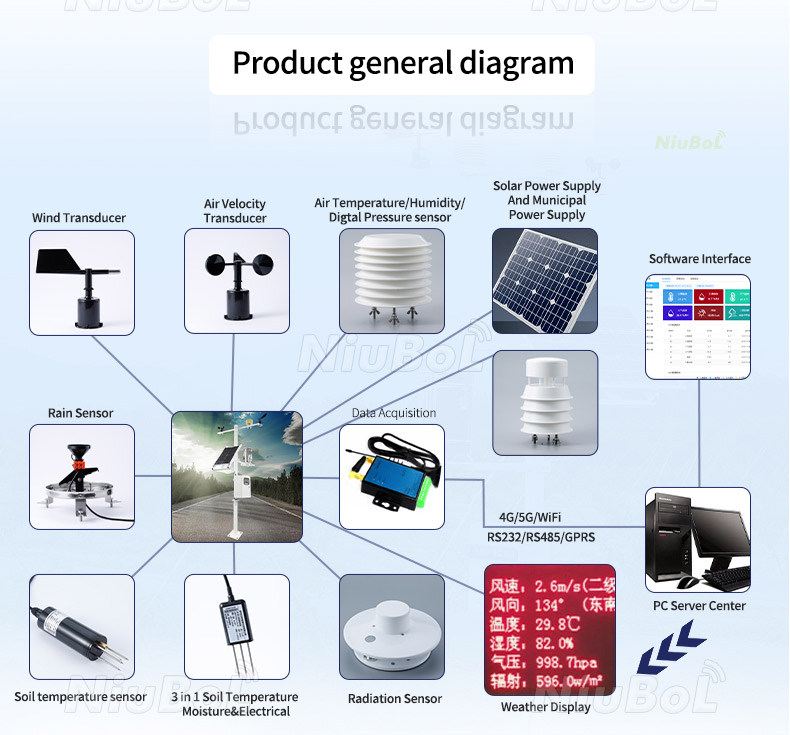
A typical automatic agricultural weather station includes:
Temperature & humidity, wind speed & direction, rain gauge, light/radiation, soil sensors (optional), CO₂, EC, leaf wetness (expandable)
Multiple RS485 & analog channels, 8–32 GB storage, solar/city power management
4G/LoRa/NB-IoT, supports MQTT/HTTP/Modbus TCP
Pole/tripod, bird spikes, waterproof enclosure, outdoor cabinet
Solar panel + battery or 220 V AC → 12 V DC
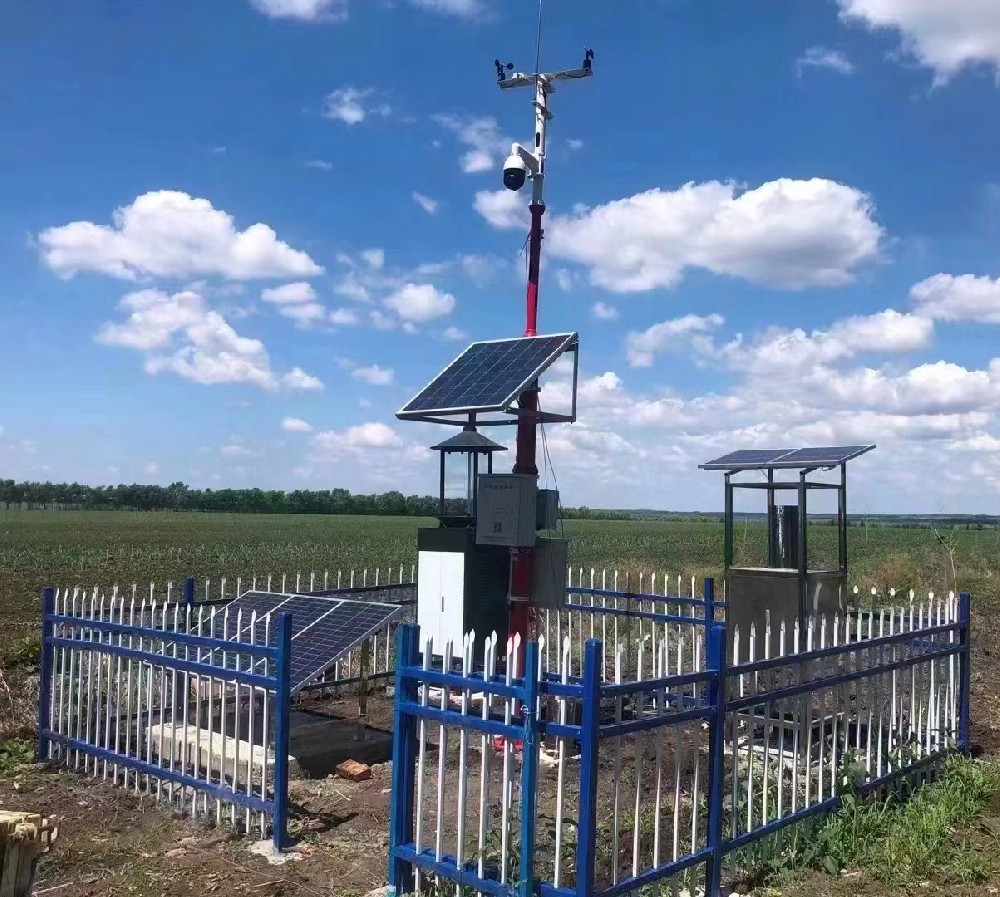
| Parameter | Measurement Method | Output | Notes |
| Temperature | PT100/NTC | Modbus RS485/4-20mA | Fast response |
| Humidity | Capacitive | Modbus RS485/4-20mA | High stability |
| Wind Speed | Ultrasonic | Modbus RS485/4-20mA | No mechanical wear |
| Wind Direction | Ultrasonic/Vane | Modbus RS485/4-20mA | High sensitivity |
| Rainfall | Tipping bucket | Pulse/RS485 | 0.2 mm resolution |
| Light/illuminance | Photodiode | Modbus RS485/4-20mA | Fast response |
| Soil Moisture | FDR | Modbus RS485/4-20mA | High accuracy |
| Item | Specification |
| Channels | 4×RS485, 4×analog |
| Storage | Local + cloud |
| Communication | 4G / RS485 |
| Protocol | Modbus-RTU / MQTT |
| Power | DC 12 V / Solar |
| Sensor | Range | Accuracy |
| Temperature | −40~85 °C | ±0.3 °C |
| Humidity | 0–100 %RH | ±3 %RH |
| Wind Speed | 0–60 m/s | ±0.3 m/s |
| Wind Direction | 0–360° | ±3° |
| Rainfall | 0–4 mm/min | 0.2 mm resolution |
| Light/illuminance | 0–200,000 Lux | ±5 % |
| Soil Moisture | 0–100 % | ±3 % |
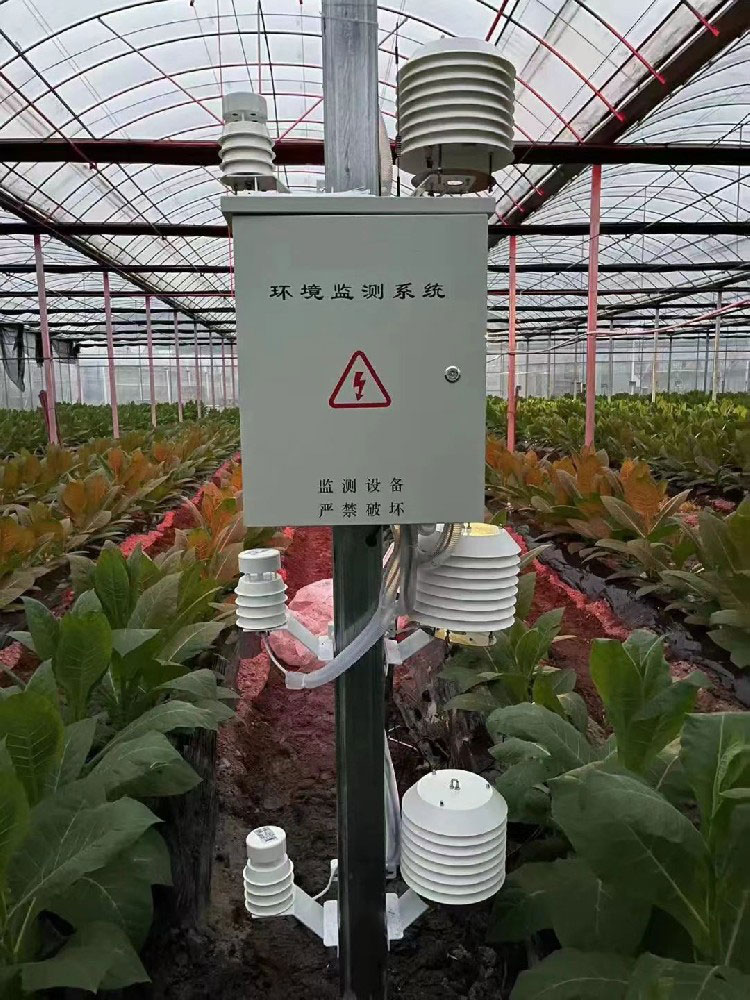
- Temp/humidity sensor: 1.5–2.0 m above ground, with radiation shield
- Wind sensors: ≥10 m or unobstructed
- Rain gauge: 0.7–1 m, perfectly level
- Radiation sensor: no shading
- Soil probes: 10/20/30 cm depths
- North alignment for wind direction
- Add 120 Ω terminal resistor at RS485 bus end
- Keep signal cables >10 cm away from power lines
1. Choose unobstructed location and erect pole
2. Mount solar panel and battery box
3. Install sensors at specified heights
4. Connect RS485 and power wiring
5. Set Modbus address and baud rate
6. Power on and verify data refresh
7. Log into cloud platform to confirm online status
8. Calibrate rainfall, wind direction, etc.
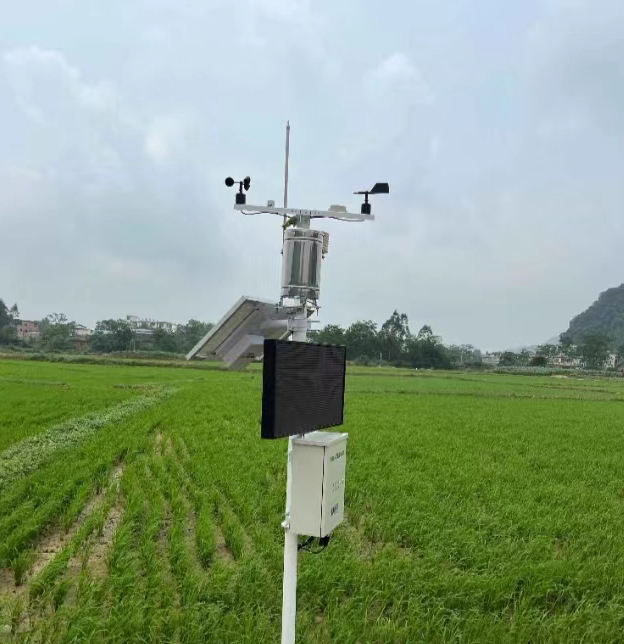
| Symptom | Troubleshooting Steps | Possible Cause |
| No data upload | Check 4G signal, SIM card, APN | Network issue |
| One sensor no data | Check RS485 address/wiring sequence | Address conflict or loose wire |
| Rainfall not counting | Clean debris | Blocked funnel |
| Wind direction fixed | Check north calibration | Compass offset |
| Abnormal soil data | Check burial depth, salinity interference | Improper installation |
| All RS485 data = 0 | Check GND-A-B wiring | Wiring error |
| Data drift | Recalibrate | Aging or moisture accumulation |
| Solar power failure | Check controller and battery | Charge/discharge fault |
| Missing data on cloud | Check device time sync | Clock drift |
| Frequent reboots | Check voltage stability | Power issue |
Sowing window, irrigation timing, frost/heat warning, pest model input
Precise regulation of temperature, humidity, CO₂; automatic ventilation/shading/humidification
Linkage with automatic irrigation, valves, drones, and machinery
Long-term meteorological data accumulation and model input

1. Open field → Wind, rain, light, air T/RH, 3-layer soil moisture, 4G + solar
2. Greenhouse → T/RH, CO₂, PAR, soil moisture, control interface
3. Research → Solar radiation, air pressure, high-precision rainfall, multi-layer soil, local backup
Key selection criteria: accuracy, Modbus support, >8 channels, IP65–IP67, wide temperature range, calibration certificates.
| Item | Agricultural Weather Station | General Weather Station |
| Focus | Crop-related (light, soil, etc.) | Urban/regional meteorology |
| Expandability | Supports soil/CO₂/leaf wetness | Usually fixed configuration |
| Communication | LoRa/4G/RS485 mixed | Mostly internal network |
| Application | Farms, greenhouses, research | City weather monitoring |
| Data Models | Irrigation/pest models | Weather forecast models |
1. Do they need calibration? → Yes, especially wind direction, rainfall, and soil sensors.
2. Maintenance frequency? → Outdoor: inspect every 1–3 months.
3. Must wind sensors be at 10 m? → Not mandatory, but higher is more standard.
4. Max RS485 length? → 1200 m standard, extendable with repeaters.
5. Can they link with auto-irrigation? → Yes, via RS485/relay/cloud strategy.
6. How long do solar systems last on cloudy days? → 3–7 days depending on battery capacity.
7. Must rain gauge be level? → Absolutely; most error comes from tilt.
13. What certificates does NiuBoL equipment have? → CE, ISO9001, RoHS, and calibration certificates.
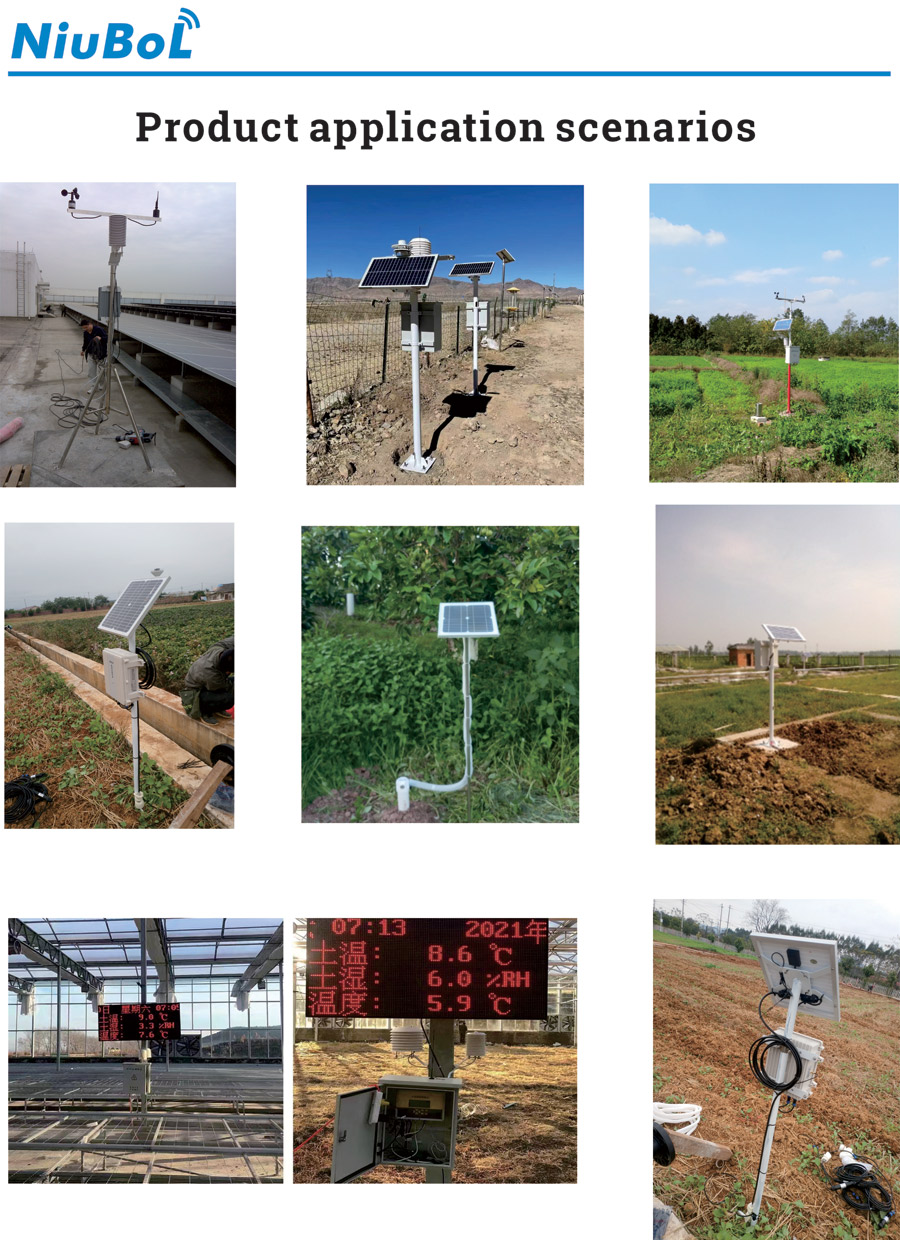
Agricultural weather stations are the infrastructure of smart agriculture. Their value lies in replacing experience with data and guesswork with models. From sensor principles, signal transmission, and structural design to installation standards, troubleshooting, and application scenarios, this system forms the “environmental perception layer” of agricultural production.
As agricultural IoT accelerates, agricultural weather stations will continue to deeply integrate with automatic irrigation, pest forecasting, and greenhouse control, becoming a key technological tool for sustainable agricultural development.
Related recommendations
Sensors & Weather Stations Catalog
Agriculture Sensors and Weather Stations Catalog-NiuBoL.pdf
Weather Stations Catalog-NiuBoL.pdf
Related products
 Combined air temperature and relative humidity sensor
Combined air temperature and relative humidity sensor Soil Moisture Temperature sensor for irrigation
Soil Moisture Temperature sensor for irrigation Soil pH sensor RS485 soil Testing instrument soil ph meter for agriculture
Soil pH sensor RS485 soil Testing instrument soil ph meter for agriculture Wind Speed sensor Output Modbus/RS485/Analog/0-5V/4-20mA
Wind Speed sensor Output Modbus/RS485/Analog/0-5V/4-20mA Tipping bucket rain gauge for weather monitoring auto rainfall sensor RS485/Outdoor/stainless steel
Tipping bucket rain gauge for weather monitoring auto rainfall sensor RS485/Outdoor/stainless steel Pyranometer Solar Radiation Sensor 4-20mA/RS485
Pyranometer Solar Radiation Sensor 4-20mA/RS485
Screenshot, WhatsApp to identify the QR code
WhatsApp number:+8615367865107
(Click on WhatsApp to copy and add friends)
